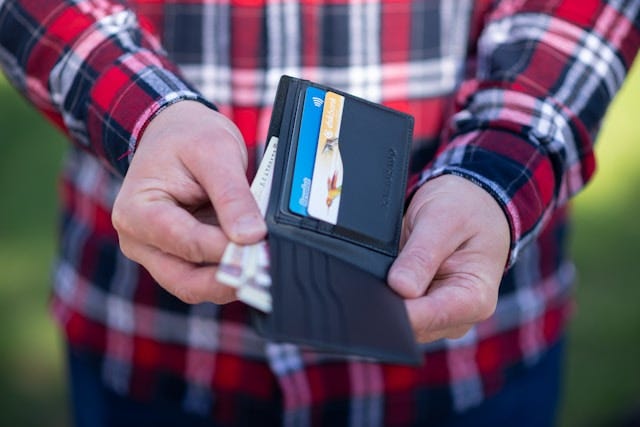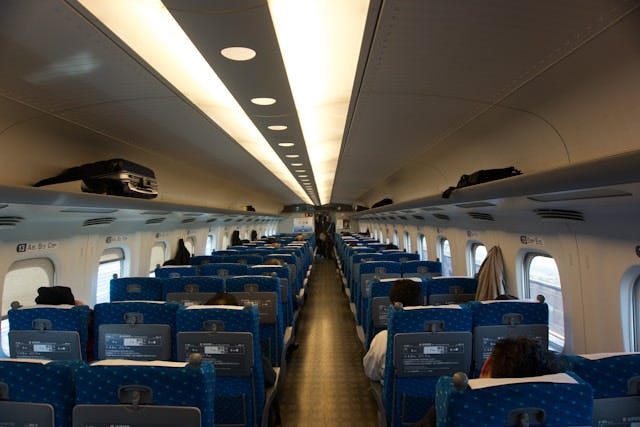How to lose your wallet in Japan, but not lose your mind
You'll probably get it back, with everything still inside
Although I may give the impression of someone who knows what he’s doing when it comes to travelling in Japan, I do make mistakes. Missed a plane? Check. Missed a train? A few times. Checked in on the wrong day? That too. But my most common blunder is leaving things behind.
Note that I don’t say lose here: in every single case, I’ve always got my stuff back. That, my friends, is the beauty of living in a high-trust society - citizens don’t routinely pocket stray wallets. People usually hand them in, complete with all the cash and cards!
Moreover, Japan is exceptionally good at handling lost property so you can actually get it back relatively quickly. So while I hope you won’t have to deal with this kind of hassle on your trip, it pays to know what to do should the worst come to the worst.
How it usually works
I’ll walk you through the process first, before looking at some common scenarios.
1. You realise you’ve lost something
2. Find the nearest helpful person (staff member, police officer, hotel receptionist)
3. Report your item in detail, plus where and when you lost it
4. Wait for a phone call or email
5. Go to pick it up at a lost and found office, police station, or similar
6. Fill in paperwork
7. Get item
8. Go on your merry way
A word about language
At some point, you’re going to need to describe your precious limited edition Jurassic Park backpack (because let’s face it, with velociraptors in the gift shop, you can’t go back to get another one).
Learning all the vocabulary to describe it will take way too long. Instead, I’d recommend learning how to announce the major problem of you’ve lost something, and then falling back on your translation app. (I recommend VoiceTra, although Google Translate is pretty decent.)
Handy phrase variations
I lost my wallet.
saifu o nakushimashita
I lost my smartphone.
sumaho o nakushimashita
I lost my backpack.
ryukku o nakushimashita
I lost my suitcase.
suutsukeesu o nakushimashita
Now let’s look at three real-life scenarios to see how things work.
You lost something at a tourist attraction
Technically, I can’t take credit for this blunder. That belongs entirely to my father, who managed to mislay his wallet on a visit to Tokyo.
We’d finished breakfast and were ready to leave the hotel to go on a bicycle tour. What’s this? My father couldn’t find his wallet anywhere.
After looking high and low, it became clear that it wasn’t in the hotel room.
When I headed down to the front desk, they reported that nobody had handed a wallet in.
What about the places we visited the previous day? The last time my father had used his wallet was in the SkyTree gift shop.
Since we were late for the bicycle tour, I left my phone number with the hotel staff, and we headed out.
I thought I’d have to call the SkyTree myself that afternoon, but while on the tour, I got a call from the hotel. They’d done it for me, and found that the wallet was safe at the SkyTree Lost and Found Centre.
It did cost an afternoon to wander back to the SkyTree to pick up the wallet. However, this episode does prove a point that hotel staff in Japan are generally incredibly helpful when things go wrong. So don’t be afraid to ask for assistance, even if you need to rely on a translation app to communicate.
You left something on the train or in the station
If you end up getting off a train minus some of your belongings, don’t panic! Over the years I’ve exited trains leaving behind jackets, backpacks, and even suitcases.
On every occasion, I’ve got them back on the same day.
As soon as you realise what’s happened, go find a member of railway staff. Usually it’s best to talk to someone at the ticket gates, rather than on the platform. That’s because staff on the platform are busy making sure you don’t fall onto tracks in your panic, and staff at the ticket gates can call people to search for your things.
You’ll need to report which train you were on, so pull up the departure and arrival times for your journey.
If you’re using the Shinkansen, trains actually have numbers, like “Nozomi 27” or “Hikari 22”. Look at your seat reservation ticket, or check in the Smart EX app, or even the directions in Google Maps.
You’ll also need to tell staff about exactly where your lost item is. Again, if you were using the Shinkansen, this is easy - just show them your seat reservation information.
If you’re using local trains which don’t have reserved seating, location information can be a little trickier to provide. Every car has a number, but you probably don’t remember which one you were in. Were you on the left or right side of the train? In the middle of the car or at the end? If you don’t know, don’t panic. But try to give as much information as possible.
Lost in Japan, somewhere
But what if you don’t know where you lost something?
Earlier this year, I did the unthinkable, and mislaid my credit card. Since I used cash all day, I wasn’t aware of this tragedy until the late afternoon.
The last time I had used the card was to buy Shinkansen tickets in the morning, so I reasoned that I probably dropped it somewhere between the ticket machine and train.
I guessed it was probably somewhere inside the Shinkansen system.
Once I’d put a block on the card, I opened up Japan Railways (JR) Central Lost and Found page. (I’d been travelling from a station in the JR Central area).
Here I could quickly report the loss without having to go to a JR station. The other major advantage of this method was that everything could be done in English.
I didn’t have to wait long to hear back. Barely an hour had passed before I got an email saying that JR had my card.
Maybe you’re nowhere near the trains. If you’re out sightseeing and lose something, try to narrow down where it happened as much as possible.
Then, find the police station closest to that spot and report it there.
Reporting lost items
Whether you do this in person or use an online form, it’s important to provide as much detail as possible about your lost property to staff. Colour and size are a given, but branding or logos can be incredibly helpful in speeding up the recovery process. If your luggage is a common colour like black or silver, consider adding stickers or a keychain, just to add a distinguishing characteristic. Obviously, it helps if you do this before you lose it!
Picking up your things
There are three common places you’ll need to visit to retrieve any lost items.
First, there’s the Lost and Found Office. Major stations and tourist attractions have these, and are often marked on maps.
Depending on the situation, lost items may be kept at a smaller station before heading to a Lost and Found Office. You might be asked to go to this smaller station to get your stuff back.
Finally, after about one to two weeks have passed, companies take lost property to the nearest police station. So if it’s been some time since you parted company, consider checking with the local rozzers. If a member of the public finds your item out on the streets, it’s likely they’ll take it directly to the cops anyway.
Wherever you pick up your stuff, you’ll be asked to confirm things like your identity, as well as the description of the lost item. Take along your passport and do your best with a translation app and you’ll be fine.
Sometimes I’ve been asked about the contents of my luggage, just to confirm it’s mine. Be patient with the staff as they ask questions and fill in forms, and before long you’ll be on your way as if nothing ever happened.
Handy Links
Usually, you should report the loss of property to staff directly. However, these links provide online forms or helplines with English support that can make things easier.
JR Central (Tokyo ↔ Osaka)
https://global.jr-central.co.jp/en/lost-and-found/
Tokyo Metro Lost and Found
https://www.tokyometro.jp/en/faq_lost/index.html
JR East Infoline
https://www.jreast.co.jp/multi/customer_support/infoline.html
Trip Essentials
Everything you need in one place - get ready and support my work at the same time!
Basics: eSIM / Sim Card / Pocket Wifi / VPN / Travel Insurance
Work with me: Japan Plan Support (Paid Consulting)
Youtube: Get ready for Japan playlist
Transport: JR Pass / Regional Passes / Shinkansen Tickets / Car rental
That’s all for this month! See ya!
Andrew
*There are some affiliate links in this email: I will earn a small commission if you buy something, and it costs you nothing. Cheers!









My husband and I had the experience of leaving his backpack on a regional train last year. We didn’t panic, as we were in Japan, whose reputation for being a respectful culture was made
known to us, pre-
travel. The station officer and our hotel staff kept us informed after we’d reported our error. The train was on its way to its final destination, where it would be cleaned and inspected…and when they could report it found. They offered to return it to us at our hotel Matsumoto when the train returned the following day As we had plans for a short stay there, we opted to retrieve it ourselves. I had a beautiful unscheduled trip through the mountains and successfully brought the backpack to my husband. We loved our time in Japan . We encourage everyone who asks us to make the trip.
Great insights Andrew. Thanks. Let's hope this trend prevails over time.